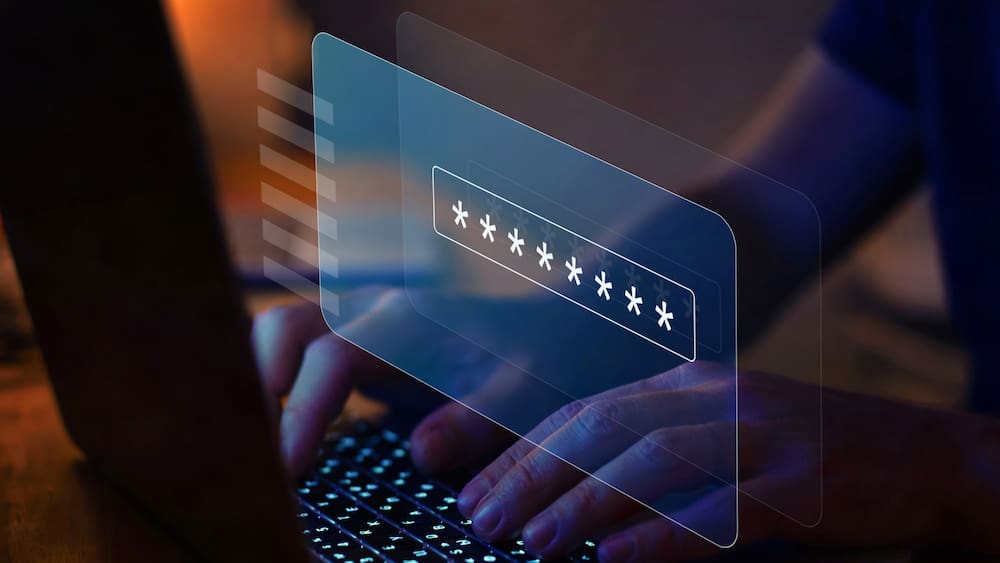NIST Password Guidelines: 11 Rules to Follow
The National Institute of Standards and Technology (NIST) has continuously updated its password guidelines to help organizations protect their systems and sensitive data from unauthorized access. In its latest update, NIST outlines 11 key rules that businesses must follow to ensure password security. Risk Cognizance, an easy-to-use automated compliance solution, can simplify the implementation of these NIST password guidelines, making it easier for businesses to stay secure and compliant.
What Are NIST Password Guidelines?
The NIST Password Guidelines are a set of best practices and standards developed to improve password security and make systems less vulnerable to cyberattacks. These guidelines help organizations establish password policies that are strong, effective, and easy to enforce. The recent update to these guidelines emphasizes more user-friendly approaches to password management, encouraging practices that balance security and ease of use.
Risk Cognizance offers a seamless, automated solution to ensure that organizations can easily adopt and follow the NIST password guidelines without the need for complex manual configurations. With Risk Cognizance, businesses can streamline their compliance efforts while maintaining the highest levels of password security.
Key Updates in NIST Password Guidelines
The NIST password guidelines have evolved to address emerging security threats and to simplify the user experience. The following 11 rules, based on the latest NIST guidelines, should be followed by organizations to secure their systems and protect sensitive data.

1. Avoid Complex Passwords with Special Characters
NIST no longer recommends the use of complex passwords with random special characters, such as “#” or “@”. This change aims to reduce the burden on users and encourages them to create passwords that are easier to remember without compromising security.
With Risk Cognizance, businesses can automate the creation and enforcement of user-friendly, secure passwords that meet the new NIST guidelines. The platform simplifies password management by ensuring compliance with these evolving standards.
2. Use Longer Passwords Instead of Complexity
Instead of focusing on complexity, NIST now emphasizes the importance of length. Passwords should be at least 12 characters long. This simple yet effective rule makes passwords more difficult to crack without relying on excessive complexity.
Risk Cognizance enables businesses to easily enforce password length requirements, ensuring that users are prompted to create strong passwords while maintaining simplicity and ease of use.
3. Encourage Passphrases
NIST encourages the use of passphrases—long strings of words or sentences—rather than traditional passwords. Passphrases are easier for users to remember but still provide a high level of security.
With Risk Cognizance, businesses can automate the enforcement of passphrase requirements, ensuring users create secure passwords without added complexity. The platform’s user-friendly interface makes this process easy to manage.
4. No Password Expiration without Reason
NIST now recommends against routine password expiration unless there is a valid reason to believe the password has been compromised. This update helps reduce the frequency of password changes, making it easier for users to remember their credentials while still maintaining security.
Risk Cognizance makes it easy to manage password expiration policies, ensuring that passwords are only changed when necessary and that users are prompted to do so securely when required.
5. Limit Password Attempts
Organizations should limit the number of failed login attempts to prevent brute-force attacks. NIST recommends that after a set number of unsuccessful attempts, access should be temporarily locked or require additional verification.
Risk Cognizance automates this process by helping businesses implement login attempt limits, ensuring that systems are protected from malicious login attempts without disrupting the user experience.
6. Multi-Factor Authentication (MFA)
NIST strongly encourages the use of Multi-Factor Authentication (MFA) as an additional layer of security. By requiring users to verify their identity through more than one method—such as a password and a mobile authentication code—MFA adds significant protection to sensitive data.
Risk Cognizance’s automated compliance platform easily integrates MFA requirements, allowing businesses to enforce this critical security measure without complexity. With Risk Cognizance, setting up MFA is simple and effective.
7. Allow Password Hints
NIST recommends the use of password hints to assist users in remembering their credentials without compromising security. However, these hints must be carefully designed to avoid revealing the password itself.
Risk Cognizance provides customizable options for businesses to enable password hints while maintaining strong security protocols, ensuring that hints are helpful but not vulnerable.
8. Use Encryption for Stored Passwords
Passwords should always be stored securely, using encryption methods to protect them from unauthorized access. This is a fundamental rule to ensure password safety, especially in case of data breaches.
Risk Cognizance helps businesses implement robust password encryption methods automatically, ensuring that stored passwords remain protected and compliant with NIST guidelines.
9. Avoid Password Sharing
NIST recommends that organizations discourage password sharing among users. Passwords should be unique to each user to ensure accountability and prevent unauthorized access.
Risk Cognizance’s platform helps businesses enforce password uniqueness by automatically auditing user accounts and detecting instances of password sharing.
10. Monitor and Log Password Access
Monitoring and logging password access is essential to detect and respond to potential security breaches. NIST guidelines emphasize the need for organizations to track and audit password usage.
Risk Cognizance provides automatic logging and monitoring features, making it easier for businesses to track password access and ensure compliance with NIST guidelines. The platform generates detailed reports on password usage, helping organizations stay on top of security efforts.
11. Educate Users on Strong Password Practices
Educating users about password best practices is essential to maintaining strong security. NIST emphasizes the importance of user education in password management, ensuring that employees understand how to create secure passwords and the risks of poor password practices.
Risk Cognizance makes it easy for businesses to implement user training programs and automated password policy enforcement. The platform provides real-time reminders and updates, helping users stay informed and secure.
How Risk Cognizance Helps With NIST Password Guidelines Compliance
Adopting the latest NIST password guidelines can be a daunting task for many businesses, especially without the right tools to streamline the process. Risk Cognizance simplifies compliance with these guidelines by offering an easy-to-use, automated solution that ensures your organization’s password policies remain up to date and in line with best practices.
With Risk Cognizance, businesses can automate password enforcement, manage user credentials securely, and ensure compliance with the latest NIST guidelines—all without the complexity of manual processes. The platform’s intuitive interface makes it easy for businesses to create, implement, and maintain password security policies that meet NIST standards.
The Benefits of Risk Cognizance for NIST Password Compliance
- Simplified Enforcement: Risk Cognizance’s automated features make it easy to implement and enforce NIST password guidelines, reducing the need for manual management and minimizing the risk of errors.
- Enhanced Security: With automated password encryption, multi-factor authentication (MFA), and user education tools, Risk Cognizance enhances your organization’s security posture.
- Seamless Integration: Risk Cognizance integrates easily with your existing systems and workflows, making it simple to enforce NIST password guidelines without disrupting business operations.
- Ongoing Monitoring: Continuous password monitoring and logging help businesses stay ahead of potential security threats and maintain compliance with evolving NIST standards.
Start Your NIST Password Compliance Journey with Risk Cognizance Today
Keeping your organization’s passwords secure is essential in today’s digital world. With Risk Cognizance, complying with the latest NIST password guidelines has never been easier. The platform’s user-friendly features automate compliance tasks, enhance password security, and ensure that your organization stays protected from cyber threats.
Start your journey to NIST password compliance with Risk Cognizance today and experience the benefits of an automated, easy-to-use compliance solution that keeps your business secure and compliant.

